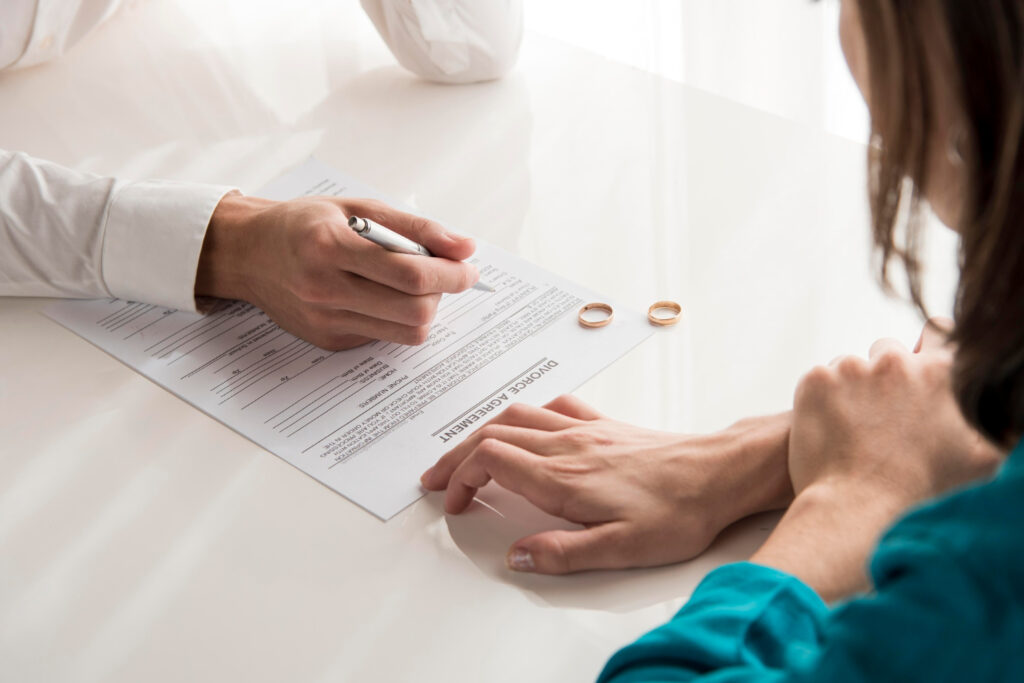Divorce Appeals: How Many Times Can You Challenge the Decision?
At LawOfficeOfBrianKelly, we’ve often been asked, “How many times can you appeal a divorce?” It’s a question that weighs heavily on the minds of many who find themselves unhappy with their divorce outcomes. Understanding the appeals process can be complex, but we’re here to simplify it for you. In this article, we’ll explore the ins and outs of divorce appeals, ensuring you know your rights and options every step of the way.
From the point of view of U.S. courts, you typically can appeal a divorce once. Further appeals within the state or to higher courts depend on specific laws and court decisions. Always check local regulations and consult with a legal expert for precise guidance.
Understanding Divorce Appeals
A divorce appeal allows a higher court to review a case when one or both parties disagree with the lower court’s decision.
Essentially a divorce appeal is a way to ask a higher court to change or clarify parts of a divorce ruling that you think were handled wrong.
When you appeal, the higher court looks at the evidence from the original case and listens to new arguments. They check if the lower court made legal mistakes or had procedural errors that affected the decision.
So to speak, keep in mind, divorce appeals can take a lot of time and money because you have to present your case again to a new group of judges. Also, there’s no guarantee that the higher court will change the decision; they might agree with the lower court.
Limits on Divorce Appeals
Limits on divorce appeals help expedite the resolution of cases and avoid unnecessary prolongation of the legal process.
At the simplest level, divorce appeal rules can differ based on where you live. They might involve deadlines for filing an appeal, reasons you can appeal, or the types of issues you can raise. Sometimes, there are also limits on how many times you can appeal a divorce decision.
A common rule is the deadline for filing an appeal, usually within a certain number of days after the final judgment. This prevents cases from dragging on forever and helps bring closure to everyone involved. There can also be restrictions on why you can appeal; for example, you might only be able to appeal if there was a legal mistake, not just because you don’t agree with the decision.
Another type of limit concerns the issues you can bring up in an appeal. Some places only let you appeal if there was an error of law or if the judge abused their discretion, rather than letting you argue the entire case all over again.
Steps to Appeal a Divorce
To appeal a divorce, you must file a notice of appeal within a specific timeframe, often as short as 30 days.
If you think about it, make sure you file the appeal within the given time limit. Explain why you’re appealing, pointing out mistakes in the original decision. Build a strong case with evidence to support your argument. Go to all court hearings and follow the legal rules. Get advice from a good lawyer to help you through the appeals process.
As a rule, keep in touch with your lawyer and stay updated on your case’s progress. Be patient, as the appeal process can take a while and be complicated. Follow all court orders and meet deadlines to avoid problems. Be ready for any outcome, even if the appeal is rejected. Stay focused and calm while working toward a favorable decision.
Grounds for Divorce Appeals
Divorce appeals often stem from significant legal or judgment errors that question the fairness of the original decision.
Simply put, you might want to appeal your divorce case for several reasons. Common ones include if the court didn’t apply the law correctly, ignored important evidence, or made a biased decision. Another reason could be if new evidence has come up that might change the result of your divorce.
When trying to appeal, it’s very important to have a good lawyer who understands the legal system and can effectively present your case to a higher court. Appeals often need to be filed within a certain period after the original divorce ruling. You also need to show a legitimate reason for challenging the decision.
The appeals process can take a lot of time and be emotionally draining. However, for many people, it’s a chance to get a fair outcome. If the appeal is successful, it can change the original divorce terms, such as who gets custody of the kids, spousal support, and how assets are divided.

Time Limits for Filing an Appeal
Appeals must be filed within specific time limits to ensure timely justice.
At the base, the court sets deadlines for filing appeals, and these deadlines can vary based on the type of case and location. It’s very important to know and follow these deadlines, as missing them could lead to your appeal being rejected. Sometimes, you can ask for an extension, but it’s not a guarantee you’ll get it.
At its simplest, it’s safest to meet the original deadline. Also, make sure you understand the specific rules for filing an appeal in your area to avoid timing problems. To sum up, following the time limits for appeals is vital to make sure your case is heard by the court.
In the End
The number of times you can appeal a divorce varies depending on the specific circumstances of the case and the laws of the jurisdiction where the divorce was granted.
What LawOfficeOfBrianKelly is saying to think about is, generally, there is no strict limit on the number of appeals allowed, but each subsequent appeal becomes increasingly difficult to succeed. It is important to consult with a legal expert to understand the options available for pursuing further appeals in a divorce case.
References
- “Divorce Wars: A Field Guide to the Winning Tactics, Preemptive Strikes, and Top Maneuvers When Divorce Gets Ugly” by John H. Castle, Three Rivers Press, 2000.
- “Divorce & Money: How to Make the Best Financial Decisions During Divorce” by Violet Woodhouse and Lina Guillen, NOLO, 2018.
- “The Good Divorce: Keeping Your Family Together When Your Marriage Comes Apart” by Constance R. Ahrons, Harper Perennial, 1998.







